In September 2021 UK petrol stations replaced the standard petrol (E5 grade) with E10 fuel, but why should you drain the tank and fuel system before putting the bike into storage and why is this vitally important with bikes running E10 petrol?
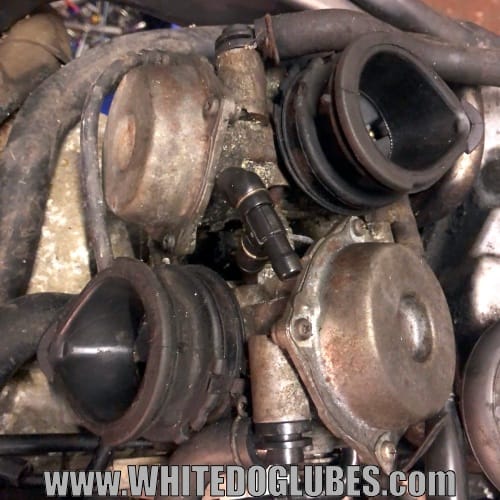
The carbs from a Honda NT650V Deauville that was left standing for several years with E10 fuel in the tank and carbs
What is E10 petrol?
There are LOADS of articles online explaining what E10 fuel is and the differences between E10 and the E5 fuel it replaced.
The number part of the grading (so E10 or E5) states how much ethanol is in the fuel, so E5 petrol contains (approx) 5% ethanol and E10 petrol contains (approx) 10% ethanol.
In very simple terms, ethanol is an alcohol made from plants (or grain). More detailed info
The main reason the UK has changed from E5 to E10 is to lower carbon emissions (as there is less carbon in ethanol so E10 contains less carbon then E5 fuel).

The carbs pictured above were on a bike left standing outside, unused for several years
We have acquired a number of bikes over the last year or so (2023/24) that the owners have got rid of due to fuelling problems.
These problems have included:
- Rough running
- Corrosion in tanks and fuel system parts
- Seized and blocked fuel system parts
- Bikes not starting due to fouled fuel
Although some of the above faults can be attributed to poorly maintained bikes or bikes left outdoors with no cover for long periods, we are finding more and more bikes are suffering with corrosion in the fuel system caused by water.


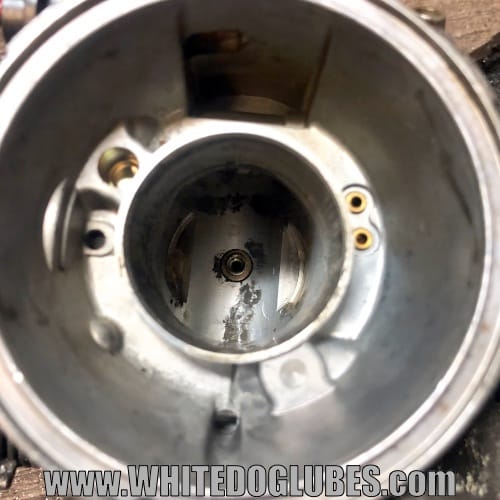




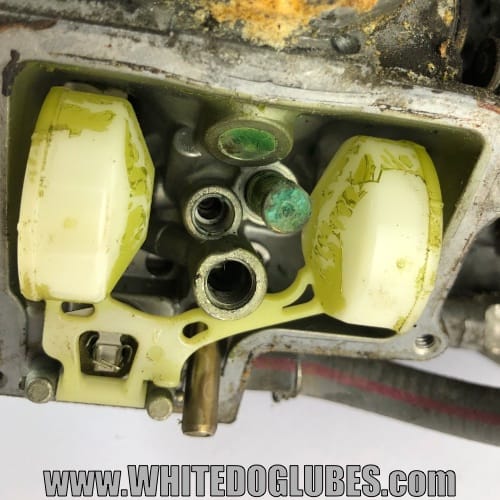

Various areas of corrosion in a carburetor from a bike left standing with E10 fuel in it
The corrosion in the carb pictured above is caused by water getting into the carb.
Although many parts of the carb can be cleaned up with a good ultrasonic cleaner, solvent and elbow grease, some parts, like the jets pictured below, would have to be replaced as they were totally blocked with corrosion.
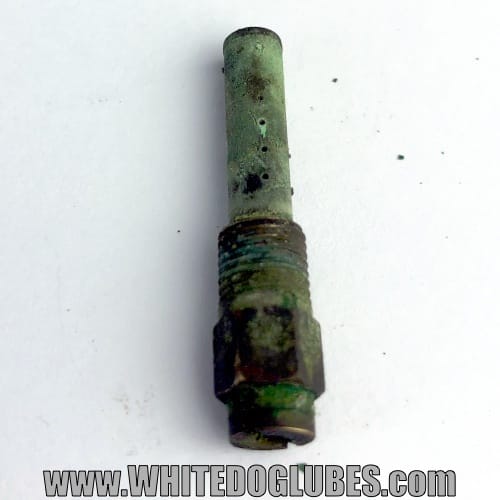

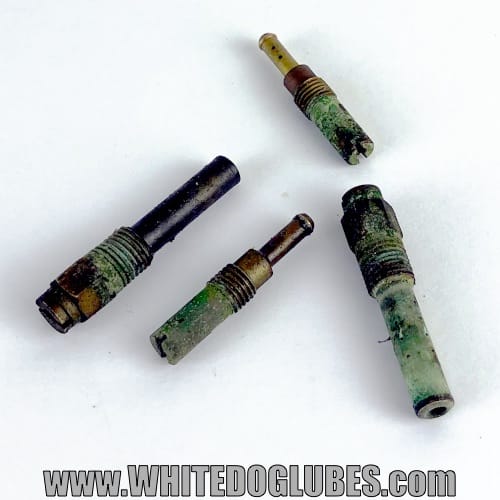

Completely blocked carburetor jets from a motorcycle carb.
The jets are possibly one of the most important parts of the carbs, these allow fuel from the float bowl at the bottom of the carb to transfer into the top of the carb to mix with the air (then go into the engine).
The jets pictured above are totally blocked and wouldn’t allow any fuel to pass through. It is unlikely any amount of cleaning (ultrasonic or otherwise) would ever get these completely serviceable again as almost all of the small holes are blocked.
So why is E10 petrol bad when left standing in a bike?
E10 fuel is HYGROSCOPIC (more info…), which means it absorbs moisture from the atmosphere.
The ethanol in the fuel is the part that absorbs water, as E10 fuel is roughly 10% ethanol it will absorb more water then E5 fuel (which contains roughly 5% ethanol).
This isn’t really a problem for bikes that are used regularly as the fuel doesn’t have time to absorb much water at all, however, it’s likely to cause problems in bikes that get stored in winter or bikes that are hardly ever or never used as the fuel doesn’t get changed regularly for fresh fuel.
Fuel SHOULD be drained from any bike that’s going to be left standing for more then a few months, but it is IMPORTANT to do this with bikes running on E10 fuel as this will cause problems next time you go to take the bike out!
Brake fluid is another product that is hygroscopic, which is why it is almost clear when new and goes darker yellow the older it gets as it absorbs water from the air.
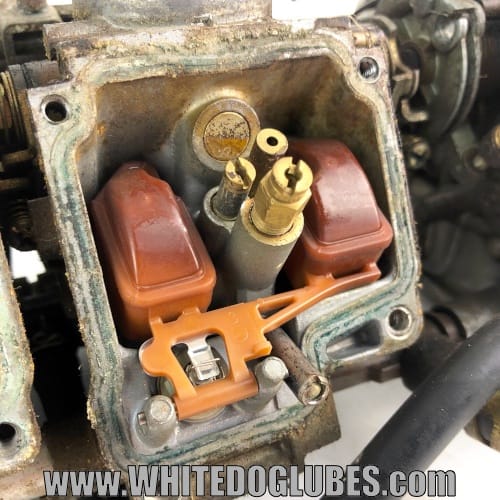
The carbs above are from a 1990’s motorbike that was left standing for years with older fuel (pre E10) left in them.

The jets above are from a Honda Deauville that was left standing with E10 fuel in the carb.
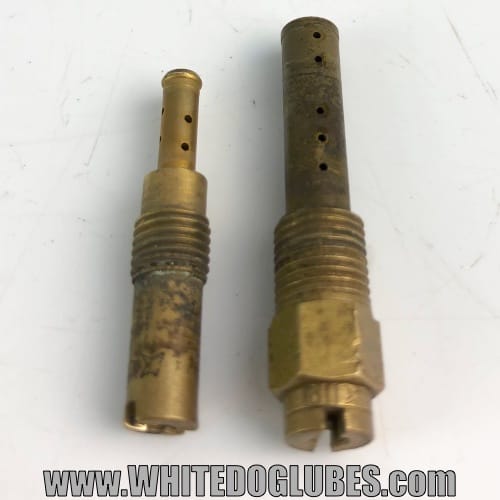
Much older carb jets, left for years with old ‘4 star’ fuel in them.
The pictures above show the difference between carbs left standing with E10 fuel and much older fuel in them. The corrosion is much less severe in the pre E10 carbs.
As stated above, it is VITALLY IMPORTANT to drain the fuel out of the bike before putting it away if you’ve been running it on E10 fuel.
On the other hand, you could just ignore this and leave the fuel in as we are always looking for more stock to break! 😀
Thanks to / Sources of info:
E10 fuel explained – Gov.uk
What is E10 – TopGear
Disclaimers:
The information provided on this page is ‘to the best of our knowledge’ and should not be taken as 100% accurate!!
To keep this page as a free resource for people to use, there are affiliate links (mainly Amazon) throughout the article. These affiliate links help maintain the cost of running this blog (basically, if you visit Amazon through one of the links and buy something, we make a few pence!).

Leave a Reply